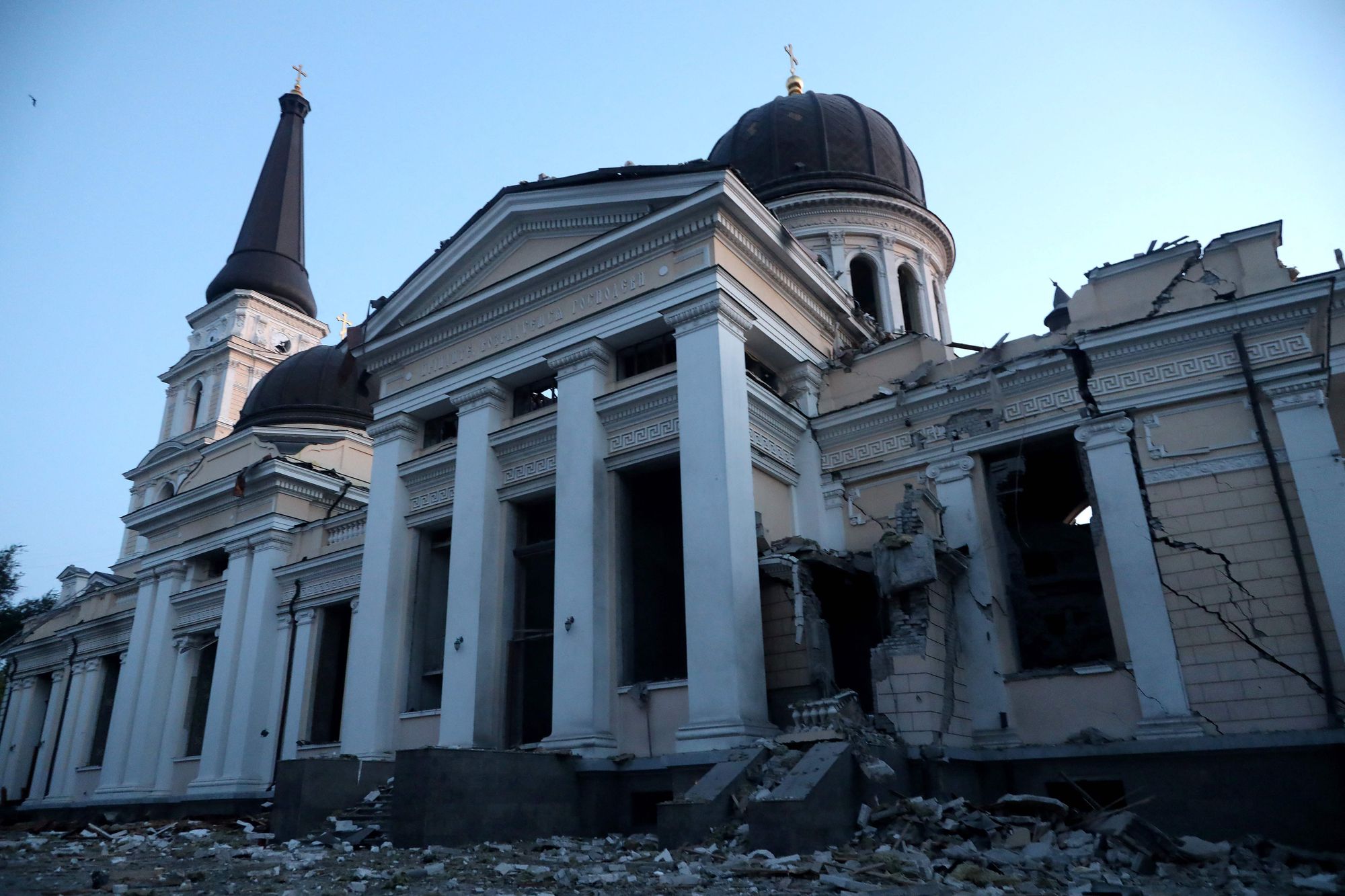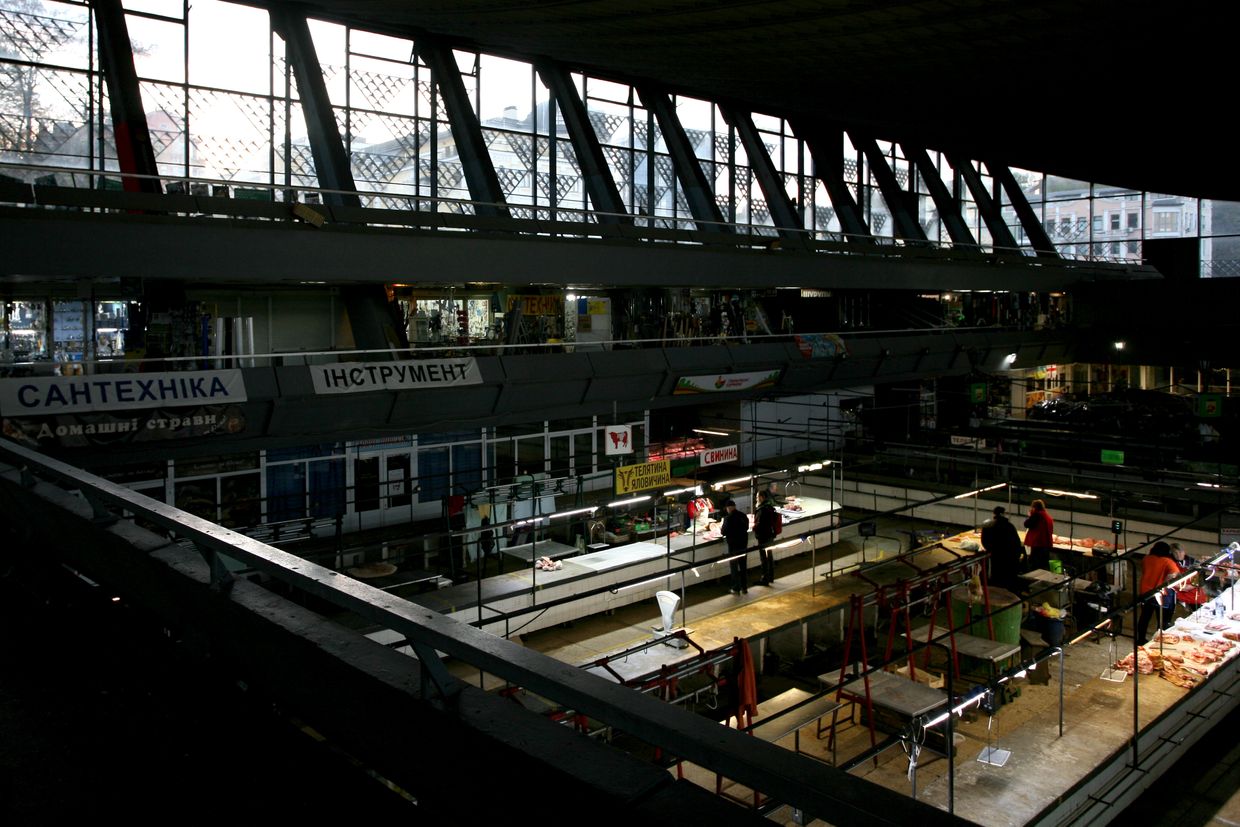
Kyiv developers bulldoze monuments as Russian missiles destroy Ukraine’s cultural heritage
The rubble of the Zelensky manor house of the second half of the 19th century after being illegally demolished in the historic center, Ukraine on July 21, 2024. (Oleksandr Gusev/Global Images Ukraine via Getty Images)
While Russian armed forces target and destroy Ukraine’s cultural heritage with missiles, rockets, and artillery, Kyiv’s developers are bulldozing historic buildings right in the city center.
On July 19, videos and images surfaced of the historic Zelensky Manor being ripped apart by a bulldozer, shocking locals. Activists who document the destruction of historic monuments in Ukraine said it had been torn down by developers planning to build a residential complex in its place.
The day after its destruction, around a thousand Kyiv residents protested at the Kyiv City Council, demanding that the officials put an end to the unlawful destruction of Kyiv’s architecture and change the municipality’s policy on cultural heritage protection.
The Zelensky — no relation to the Ukrainian president — Manor is not the first case of architectural heritage being illegally demolished but rather the latest episode in Kyiv’s common issue, where developers’ interests seem to come before the public’s.
“Since the start of the full-scale invasion, it’s only got worse,” as there are fewer activists and organizations to fight off developers across the country due to migration abroad and conscription, says Dmytro Perov, activist and founder of the NGO Spadschyna (which means heritage in Ukraine) that works to protect Kyiv’s architectural monuments.

Ukraine’s Culture Ministry says it is planning new additions to the cultural protection laws to improve the efficiency of architectural preservation in Ukraine. Activists say that while the situation has significantly improved in the past 10 years, there is a long way to go.
Zelensky Manor, previously known as the Malinin Manor, was built in the late 19th century and is famous for being home to the wealthy merchant family of Zelensky during the early 20th century.
The manor was one of the few historical buildings on Konyskoho Street and the last of its original wooden ones. In 2017, a developer, Turgenev Build, built a residential complex back-to-back with the manor.
A year later, the developers attempted to demolish the building for the first time to build an extension to the existing living complex, activists say. They managed to stop the works then.
After a few more demolition attempts, the Shevchenkivskyi district court of Kyiv city took legal control of the building in 2022, barring it from being reconstruction or deconstructed. The court-ordered ban did not stop the developers from attempting to tearing down the manor, however.
Following another go at demolition in 2022, Spadschyna activists submitted all the paperwork to Ukraine’s Culture Ministry necessary for granting the Zelenesky Manor status of a historical monument, which would prevent its demolition.
Reviewing the paperwork, as with all bureaucratic procedures, took a long time, so as of July 19, the day of its destruction, the manor did not have the official status of a historic monument. The day after the building was torn down, members of an expert commission at the Culture Ministry voted to grant the official status of a historic monument to Zelensky Manor.
The developing company, Turgenev Build — whose namesake is that of 19th-century Russian novelist Ivan Turgenev — claims that it was never notified that the city had taken legal control over the building.
In a comment to the Kyiv Independent, the company said that since the building was private property and did not have any official status of a historic monument, it “did nothing wrong from a legal perspective.”


Activists blame the bureaucrats for the lack of action to prevent the demolition. “People in the cabinets are not interested in preserving our cultural heritage,” says Perov.
The Culture Ministry publicly condemns the unlawful destruction of the historical building, as does the mayor of Kyiv, Vitalii Klitschko, who said that the Kyiv City Administration will sue the property’s owner for unauthorized demolition of the monument.
Activists and Kyiv residents accuse Klitschko of repeatedly letting developers demolish the city's historical sites. Perov told the Kyiv Independent that no decision made by the Kyiv City Council is executed without the direct approval of the city’s mayor.
Despite the strong statements of condemnation and promises to take serious measures, the issue of architectural heritage being sacrificed to the whims of developers in Kyiv is a continuous problem.
In Aug. 2023, the oldest building in Podil (one of Kyiv’s most historic neighborhoods) was demolished. One member of the Kyiv City Council, Ksenia Semenova, reported the unlawful demolition of the historic building at 13B Yearoslavska Street on Aug. 9, 2023.
According to her, the building was demolished by developers who planned to build a “Clubhouse” in its place. She says the developers did not obtain official permission from the Culture Ministry that was necessary for the building’s demolition, making it unsanctioned.
The police have started an investigation, but it remains a fact that the oldest building in the area has been destroyed.

Officials' inability to protect Ukrainian architectural heritage happens not just in Kyiv but also in many other major cities.
“The situation in the regions is even worse. Their population is smaller, and with many activists volunteering and being drafted to fight in the army, there are not enough of them to fight for cultural heritage preservation,” shares Perov.
“There are serious financial interests in the large cities, and since the beginning of the full-scale war the number of activists, unlike the number of developers, significantly decreased.”
Dmytro and his NGO believe that changing the laws regarding architectural heritage protection is key to solving the issue of its destruction. “We need to back cultural preservation legally like it is backed by European laws. Otherwise, it is an endless game of cat and mouse between the developers and the activists.”
Just recently, the Kyiv City Council allowed development at a property located in the city’s popular Zoloti Vorota neighborhood on the site of a the popular “yard with crows.”












